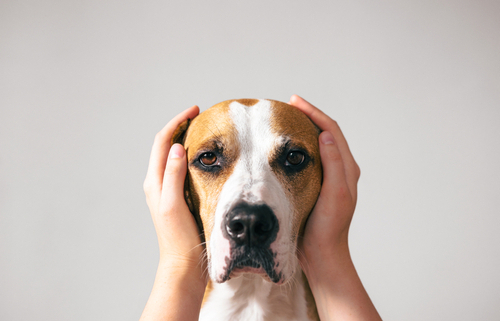Common Phobias for Dogs
It is common for our four-legged friends to be fearful of certain things. Keep in mind that fear is a defense mechanism that does not necessarily have to be eliminated. Certain wild animals rely on fear to keep them alive. It is crucial to determine if fearful behavior poses risks to the dog. We will walk you through some of the most common phobias for dogs and have to help relieve them.
Blood Injection Phobias – This may also be known as the fear of needles. Many dogs experience this phobia when they visit a veterinarian. Dogs have a hard time understanding that veterinary visits are in their best interest.
Sound Phobias – Think of loud noises like fireworks, gunshots, and thunderstorms. Many dogs have sound phobias. There is much research that suggests that noise phobias can be inherited. Herding breeds are susceptible to noise, making them more aligned with their environment.
Fear of Strangers – It is common for dogs to develop a fear of strangers after a negative experience. Dogs rescued from abusive homes often suffer from this fear, leading to reactive behavior.
How do you deal with a fearful dog? Living with a fearful dog may be stressful. You will need to have patience and consistency to treat phobias. Thankfully, some steps can help your dog deal with phobias. It is better to address the phobias sooner than later because they can worsen with time and rarely resolve on their own.
Behavior modification techniques are highly recommended to treat phobias. Also known as desensitization, these techniques help dogs manage their fearful behavior. Some medications help relieve distress from phobias. It is important to know that retraining your dog to new behavior patterns takes time and patience, and it is best done with the help of a veterinarian or certified trainer.
Basic obedience training is another option to help tackle phobias. It does a wonderful job of building confidence in fearful dogs. It is a valuable tool for redirecting undesirable behavior, like asking a dog to sit, stay, or touch during triggering situations. It is best to look at the overall situation of fear and establish the best way to go about it.



